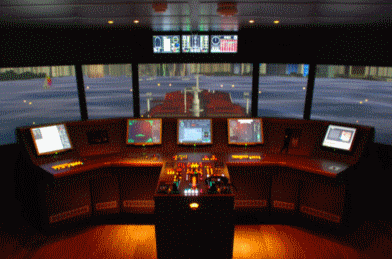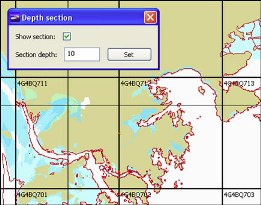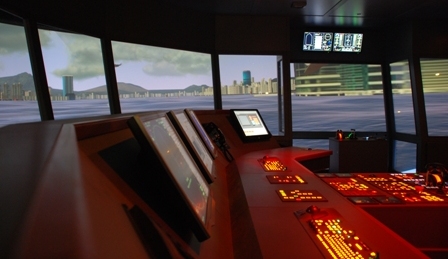Training
|
 |
Training sessions
1. Instructor preparation
According to the trainee level, the instructor proceeds as follows :
- Choice of the intervention area
- Creation of the situation
- Loading of the exercise in the simulator
- Explanation of the exercise and its objectives to the trainee
|
 |
2. Exercise performance
- The trainee then goes to the bridge with his information sheet
- The instructor controls all the external parameters (tug orders, modification of weather or hydrological conditions, ship docking) and observes the trainee reactions. He can create breakdowns and environmental modifications provided that it is still realistic.

3. Analyse
- After the exercise, it is possible to view the entire scene in the instructor room, which facilitates the assessment of positive aspects and improvement prospects.
- After analysing the scene and highlighting the defects to be corrected, it is possible to restart the exercise in the same conditions in order to validate the theoretical options.
Engineering
The SPSA wanted to get equipped with softwares that can support the development or the creation of new berths, so that each partner station will be able to propose engineering services to their port collaborators (contribution to the analyse process before acquiring new vessels or marine facilities...)